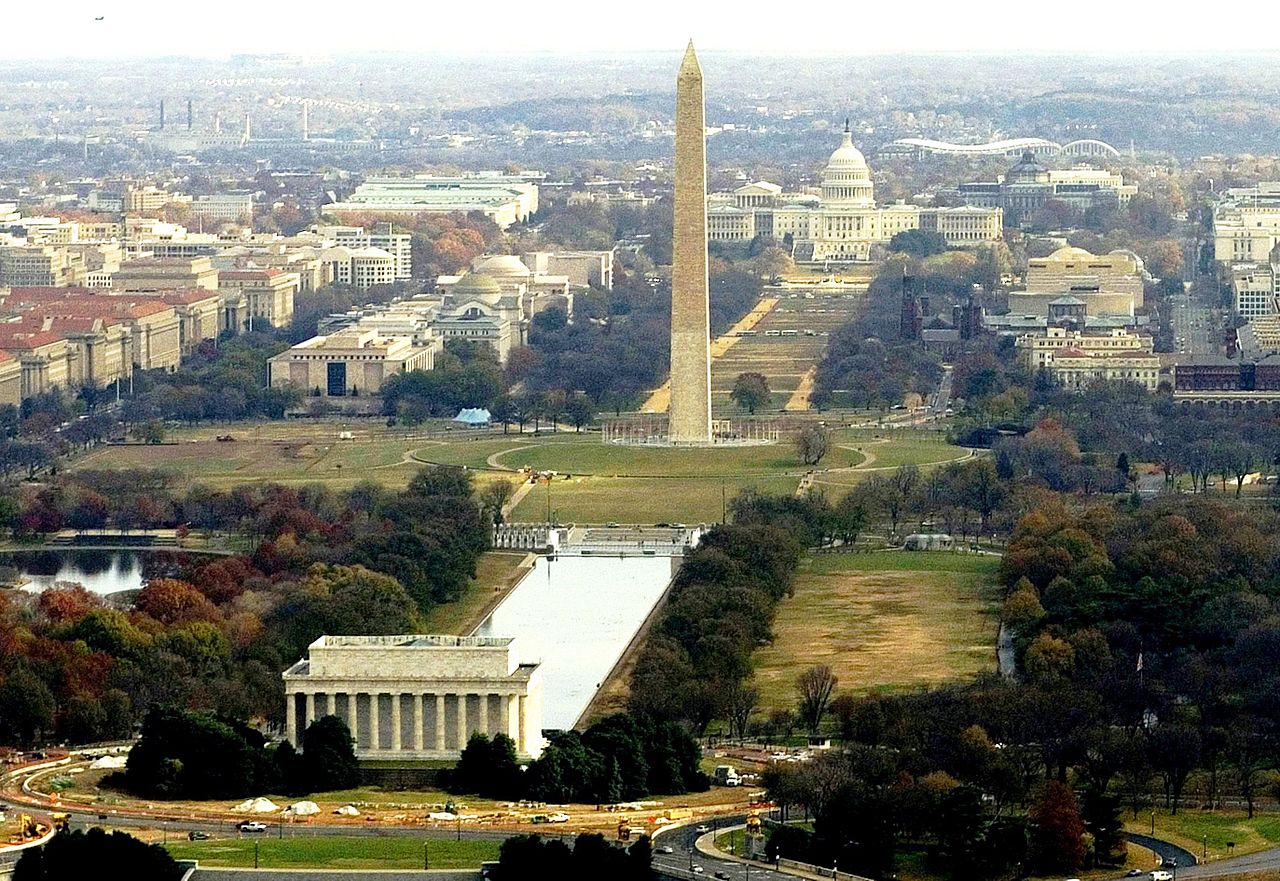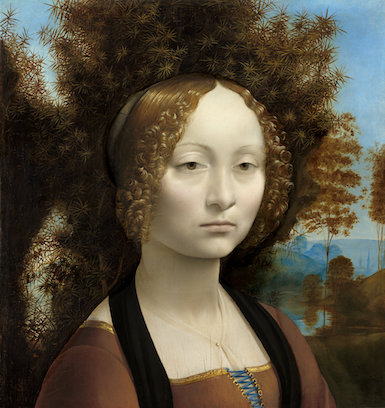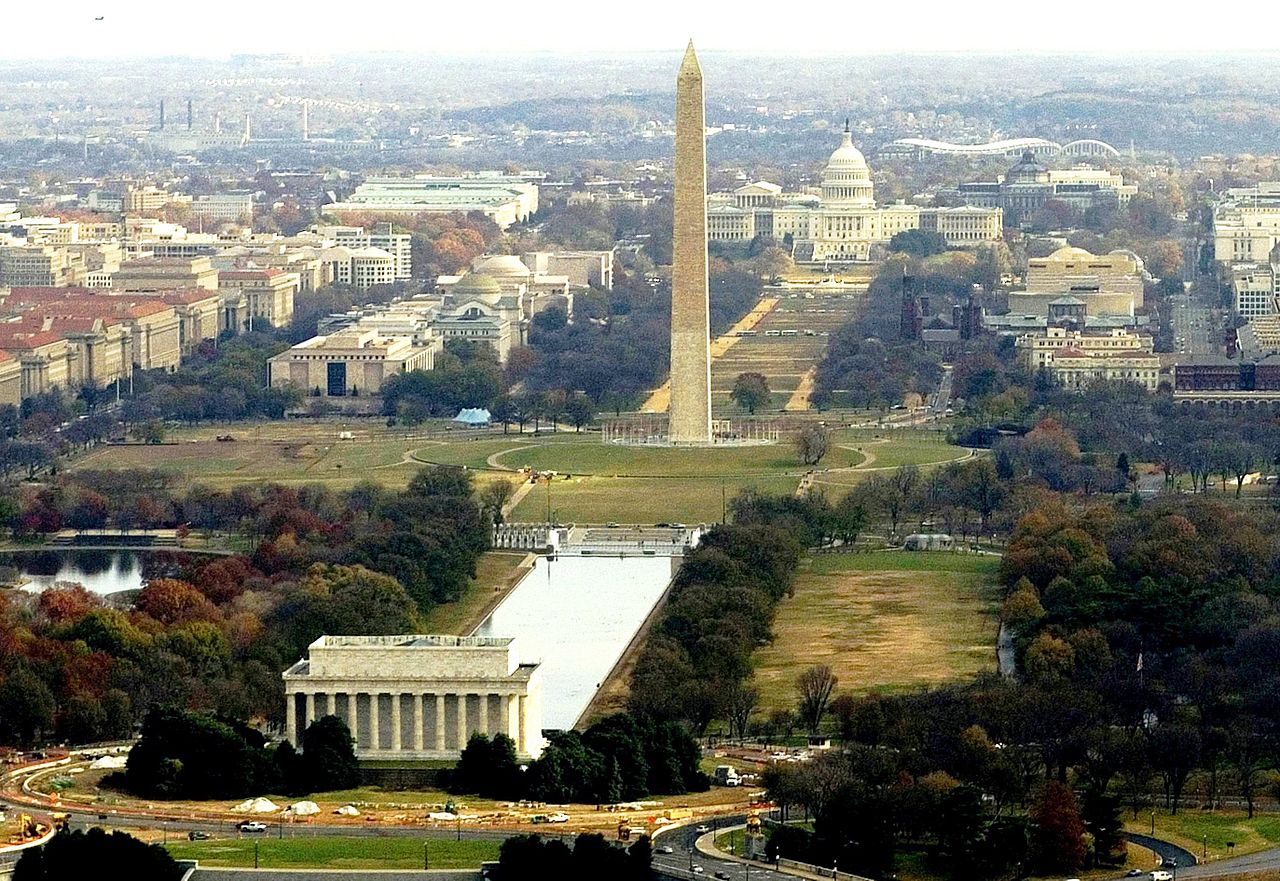[ad_1]

The National Mall.
COURTESY CREATIVE COMMONS
Daniel Sallick is the board chair of the Hirshhorn Museum and Sculpture Garden in Washington, D.C., and a founding partner of Subject Matter, a creative advocacy firm based in the city. The views expressed here are his own.
A portrait of Ginevra de’ Benci painted in 1474—the only work by Leonardo da Vinci in the Americas—sits in darkness today at the National Gallery of Art in Washington, D.C. No schoolchildren are gathered around to take in its mystical aura or to experience the genius of its creator. No one will be left to wonder why the subject appears sulky and a bit impatient.
A few blocks away, a work created five centuries later—Ron Mueck’s massive sculpture Untitled (Big Man), from 2000—sits undisturbed in a corner at the Hirshhorn Museum and Sculpture Garden. The work is usually surrounded by visitors looking in wonder and sometimes discomfort at the fleshy presence in this masterwork of contemporary art. In other buildings nearby, paintings of your favorite presidents—whether Kehinde Wiley’s dazzling new portrait of Barack Obama or Gilbert Stuart’s iconic portrait of George Washington—all now gaze into darkness.
Up and down the National Mall, some of America’s greatest cultural treasures hide behind shuttered doors because of the federal government shutdown that has stretched into its second week and has no end in sight. Institutions that collectively welcome more than 25 million visitors a year are not teeming with the curious and the hopeful, novices and aficionados. Budding artists won’t find new inspiration, and a child visiting the capital city for the first time won’t begin to unlock the secrets of knowledge within artworks that deserve to be seen.
Scenes of enchantment and fulfillment will have to wait for another day. So will the security guard who engages a visitor to discuss a favored piece of art, parents luring their kids into the world of Rothkos and Warhols, and people drawing energy from every imaginable artistic discipline—all made available for free by a government that long ago decided wisely to amass and display great works of art to enrich our culture.
Illuminating research, brilliant scholarship, and careful conservation by curators and specialists have halted, at the expense of dedicated museum workers who choose a government salary over higher-paid positions in private institutions. Their reward for this is the honor of sharing in the stewardship of some of our nation’s greatest treasures—but also, unfortunately, serving as pawns in a political fight not of their choosing.
The “non-essential” players of the ongoing federal shutdown are idled. But it is in this moment that we need to take stock of how essential art is to our country and our humanity. Our arts institutions help to feed our nation’s cultural appetite and satisfy the craving for art that has been a part of human existence for thousands of years. We need these institutions and what they deliver for all Americans.
One might wonder why art matters at a time when unpaid workers at the TSA or other essential government services are mired in their own uncertainties—when trash is piling up at national parks and our immigration system is grinding to a halt. But a moment like this allows us to see the value of our government and its institutions. Today, because of the government shutdown, the nation is getting a taste of life without some of our essential culture, including our deep yearning for art. This is not an existence anyone would choose to sustain.
For generations, leaders in both political parties have deemed it important to share our cultural treasures with the world for free, with displays and safekeeping on the National Mall. Those of us who live in Washington have become enriched by the access we have to our museums. At the Hirshhorn, where I have had the honor of serving as board chair since 2016, we are acutely aware that the majority of our nearly 1 million annual visitors are not only gracing us with their first visit to our museum—but with their first visit to a contemporary art museum of any kind. We take great pride in our responsibility of being the first place a teenager from a small town can experience the ideas integral to contemporary art. Our greatest hope is that we’re able to help export the ideas that live in our exhibits so they can find a second life providing inspiration well beyond the museum’s walls.
Having worked on Capitol Hill in the 1990s as a young aide for House Democratic Leader Richard Gephardt, I saw firsthand the weaponization of government shutdowns. The lesson we kept returning to at the end of the day is that the public wants and needs our government to work. And that applies no less to government-sponsored cultural institutions.

Leonardo da Vinci (Florentine, 1452 – 1519), Ginevra de’ Benci [obverse], c. 1474/1478, oil on panel, Ailsa Mellon Bruce Fund 1967.6.1.a
For those of us privileged to work with the arts in these institutions, we see it as our mission to make sure the country—and its leaders on both sides of the political aisle—fully understand the value of what we do and what our institutions serve. The doors of the Hirshhorn and other Smithsonian-affiliated institutions like the National Portrait Gallery, the Smithsonian American Art Museum, and the Renwick Gallery should always remain open so that people from all political and social backgrounds—and from anywhere in the country or on the planet—can expand their horizons by interacting with art.
George Washington once wrote, in a letter to a friend in 1780, “The Arts and Sciences essential to the prosperity of the State and the ornament of human life have a primary claim on the encouragement of every lover of his Country and mankind.” My hope is that when the federal government reopens and the lights again illuminate the magnificent rooms brimming with art along the Mall, we all will recognize anew the real value of the art and its importance to our people and our republic.
Such an acknowledgement from today’s leaders might even be enough to persuade the ever-stoic Ginevra de’ Benci to finally crack a smile.
[ad_2]
Source link

